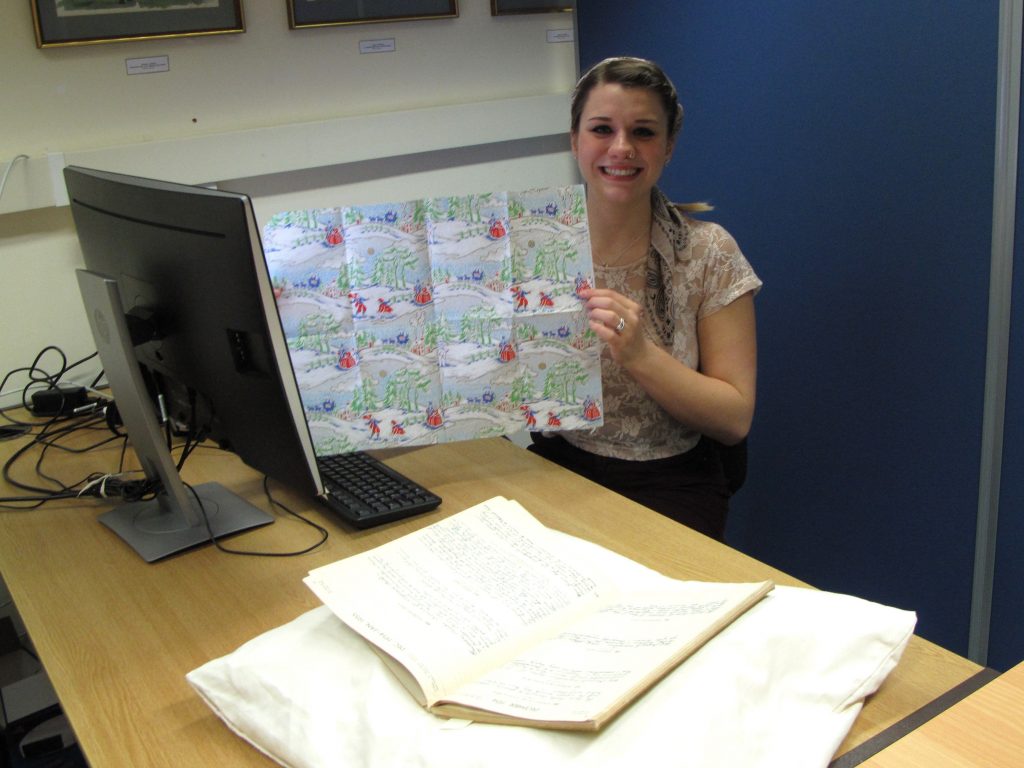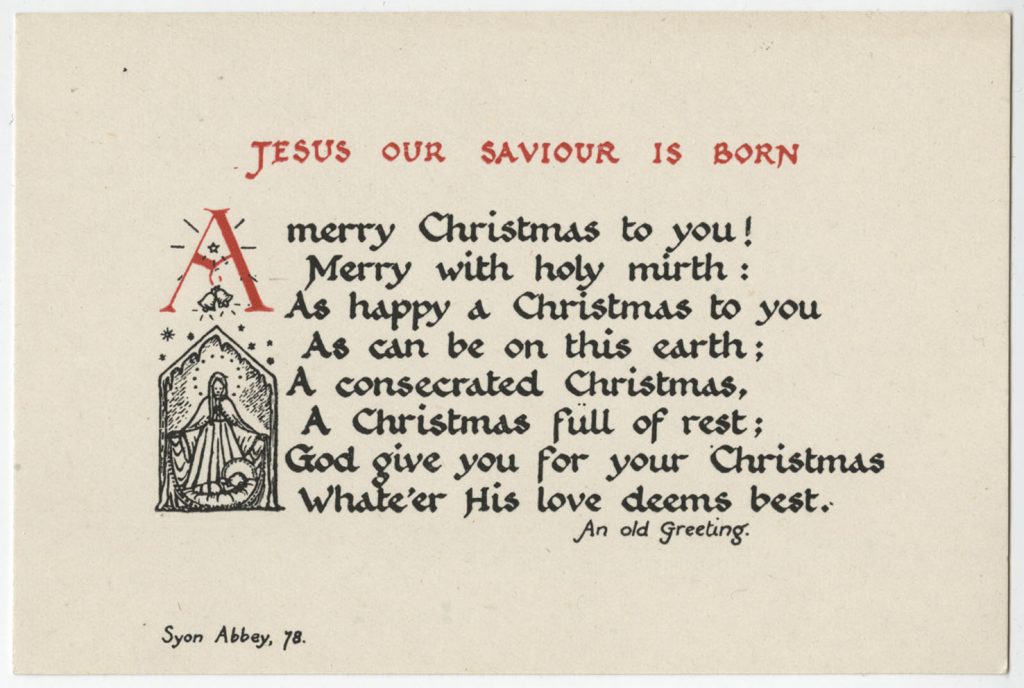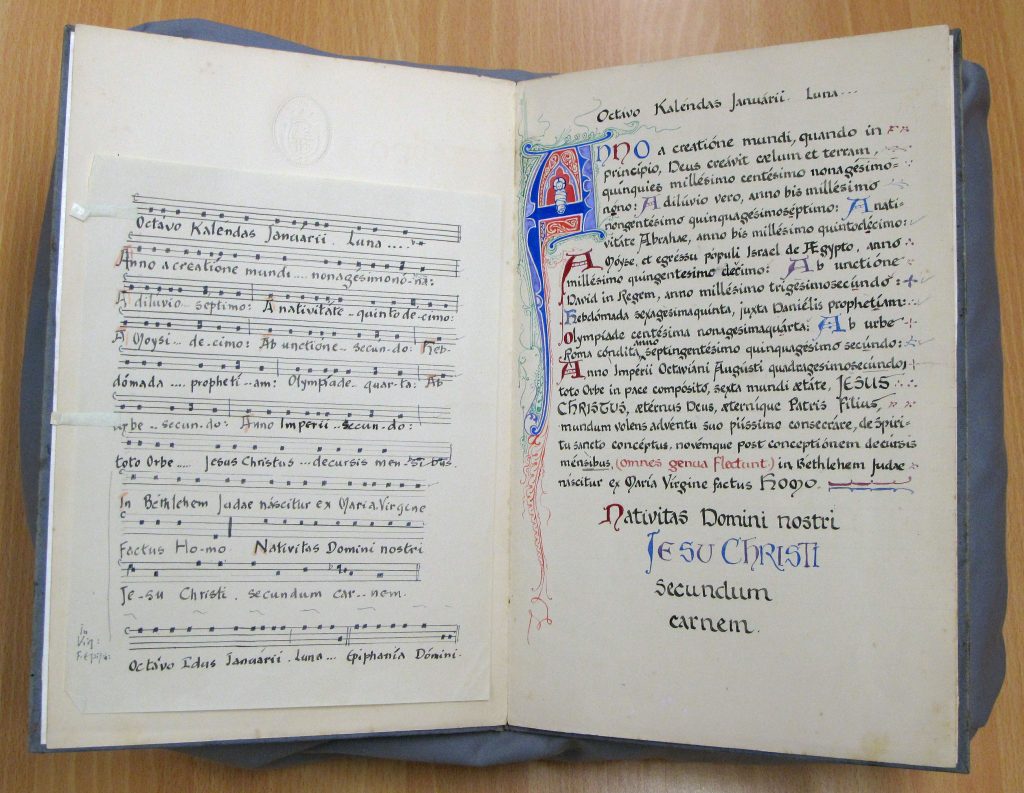One of the great joys of using archives is the unique opportunity to get to know people from the past on as personal a level as possible (without the help of time travel). We can gain insight into their personalities from their recorded thoughts, their manner of expression, their handwriting, and even their style of recordkeeping. I have been working as an archivist on the Syon Abbey cataloguing project for just over a year and, having now examined most of the material in the archive, I consider myself to be fairly well acquainted with several of the sisters from across six centuries. However, of all the sisters in Syon’s long history, those whom I feel I know best are the abbesses. The abbess – at Syon Abbey most often referred to as the ‘Lady Abbess’ but frequently also as ‘Mother’ – was an elected sister responsible for the management of the abbey, who had final authority on all matters. A large majority of the records throughout the archive were created by or for the abbess, so it is therefore unsurprising that it is abbesses of Syon Abbey who we get to know the best.
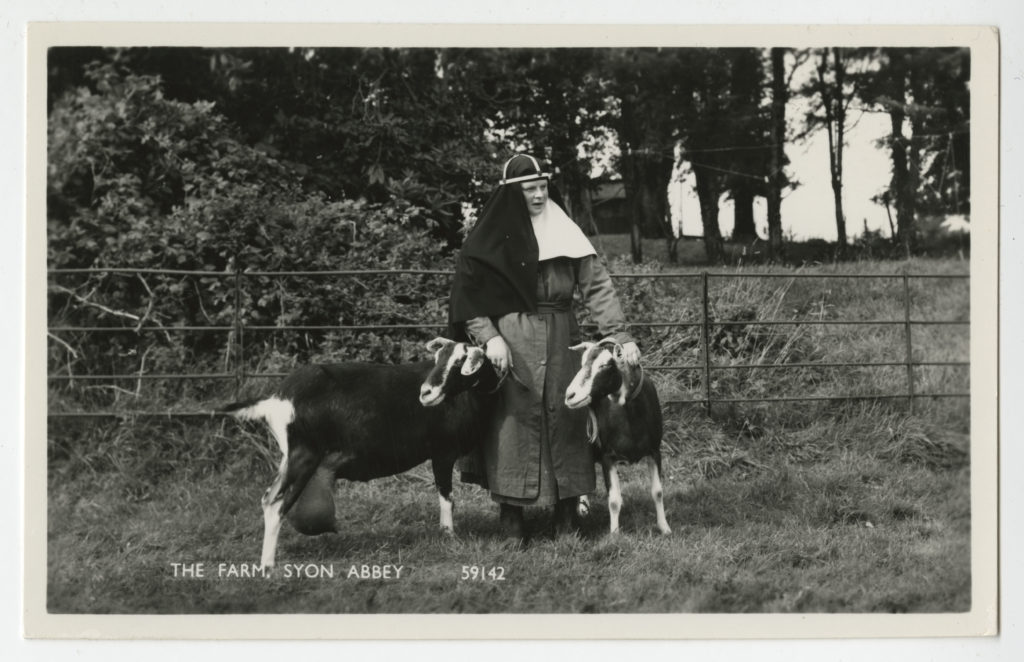
Syon Abbey postcard featuring Abbess Mary Peter Wallace (elected in 1964), c 1954 [EUL MS 389/PUB/3]. Provided for research and reference only. Permission to publish, copy, or otherwise use this work must be obtained from University of Exeter Special Collections (http://as.exeter.ac.uk/heritage-collections/) and all copyright holders.
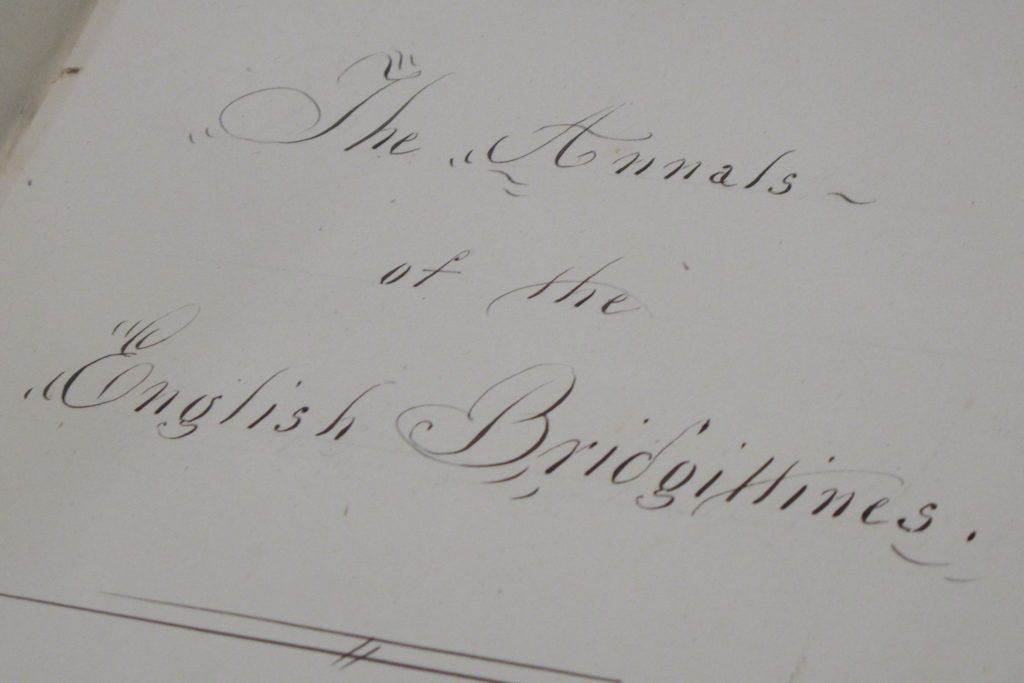
Title page of ‘The Annals of the English Bridgettines’ (EUL MS 389/HIST/1) Provided for research and reference only. Permission to publish, copy, or otherwise use this work must be obtained from University of Exeter Special Collections (http://as.exeter.ac.uk/heritage-collections/) and all copyright holders.
Following on from the annals are the 100 community diaries, dated between 1890 and 2004, many of which were kept by the abbess. Several of the diaries, particularly between 1920 and 1970, are extremely detailed and provide a rare insight into daily life in an enclosed religious community. You can browse the Syon Abbey diaries via the online catalogue, where each of the diaries have been described individually (EUL MS 389/ADM/5).
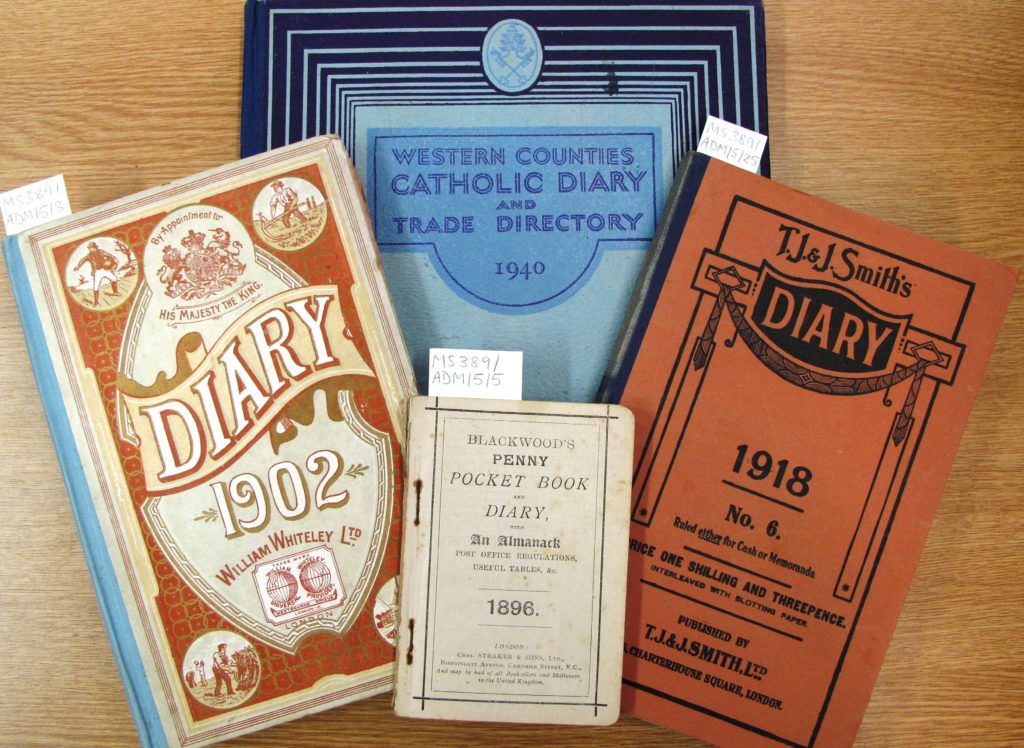
Syon Abbey community diaries (EUL MS 389/ADM/5/1-100)
If you would like to learn more about the abbesses day-to-day management of the abbey, a good place to look is the ‘Administration’ section of the archive, where amongst other records, you will find minute books of the Chapter (EUL MS 389/ADM/1) and minute books of the Council (EUL MS 389/ADM/2) of Syon Abbey. These record the decisions made by the abbess with the agreement of the community concerning all kinds of matters, including, as you will see below, the purchase of a jersey cow!
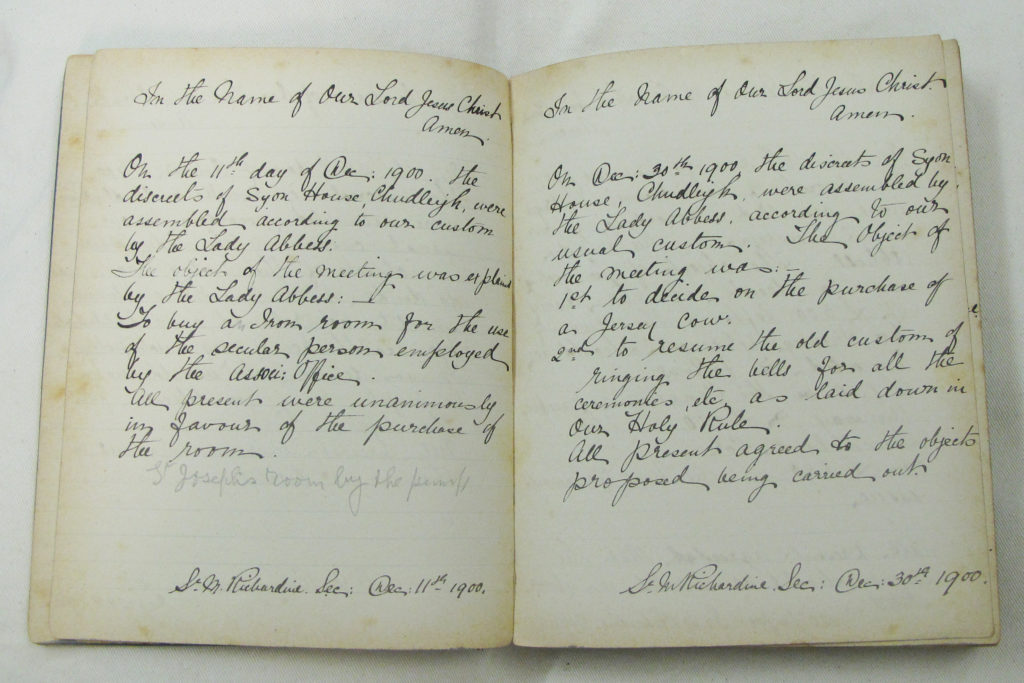
Notebook entitled ‘Minutes of the ‘Discreets’, 1898-1907 (EUL MS 389/ADM/2/2) Provided for research and reference only. Permission to publish, copy, or otherwise use this work must be obtained from University of Exeter Special Collections (http://as.exeter.ac.uk/heritage-collections/) and all copyright holders.
The Syon Abbey archive contains vast quantities of correspondence regarding all manner of things, and the majority of letters, postcards and telegramms are addressed to the ‘Lady Abbess’. The archive also includes many drafts or copies of letters sent out by the abbess. The correspondence highlights just how important the role of the abbess was, not just within the community, but also externally as the representative of the community. The archive includes correspondence regarding spiritual matters; financial, property and legal matters; relics and treasures; manuscripts and books; and history and research (just to name a few!).
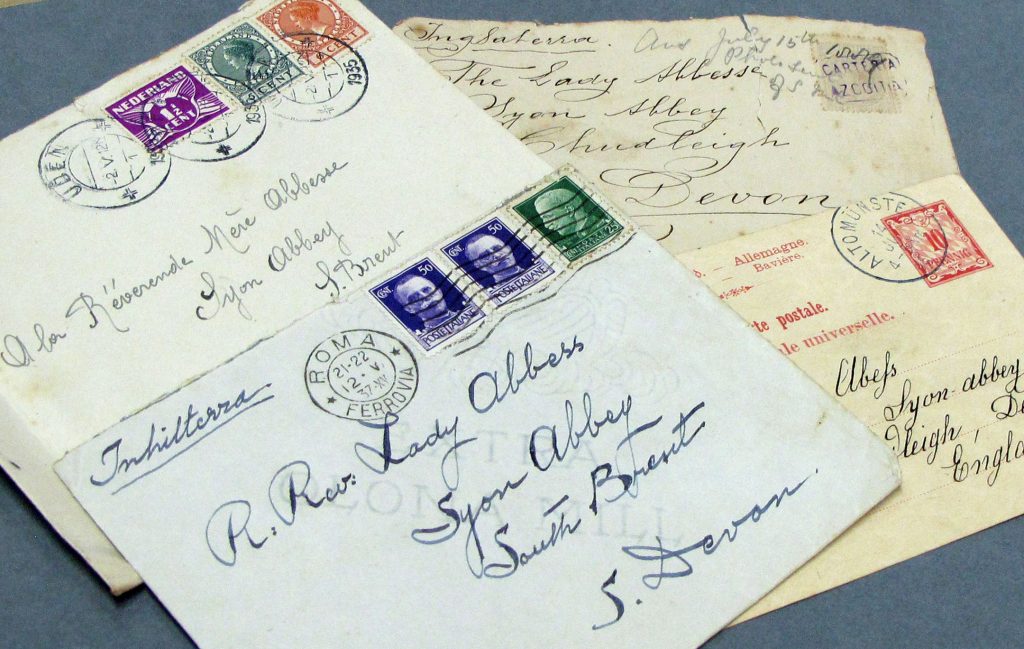
Envelopes from correspondence with other Bridgettine houses (EUL MS 389/HOU/1)
In addition to her many responsibilities regarding the management of the abbey, one of the most important tasks of the abbess was to ensure peace and order within the community. There is much evidence in the archive of the love and respect felt by the sisters towards their abbesses, but the greatest indications of this are the little homemade gifts given by the sisters to the abbess, usually on birthdays or anniversaries. They include poems, songs, and booklets containing spiritual verses. Below are two images from a booklet entitled, ‘Bridgettine Breviary Bouquet’ (EUL MS 389/PERS/JOCELYN), a compilation of extracts from the Bridgettine Breviary which was given to Abbess Teresa Jocelyn by seven sisters in 1923. The inscription reads: ‘To our dear Mother on her Bridal-day…from her loving and grateful children’.
[slideshow_deploy id=’503′]
This and much more is now available for you to explore – why not visit our online catalogue today to find out what you can discover about the abbesses of Syon Abbey!
Click here to search the Syon Abbey archive via the online catalogue.
By Annie, Project Archivist
